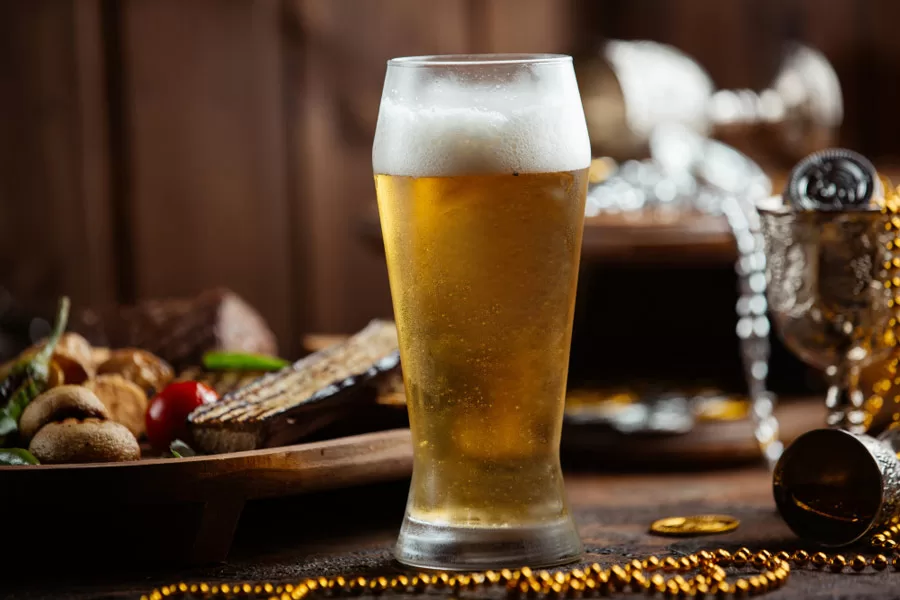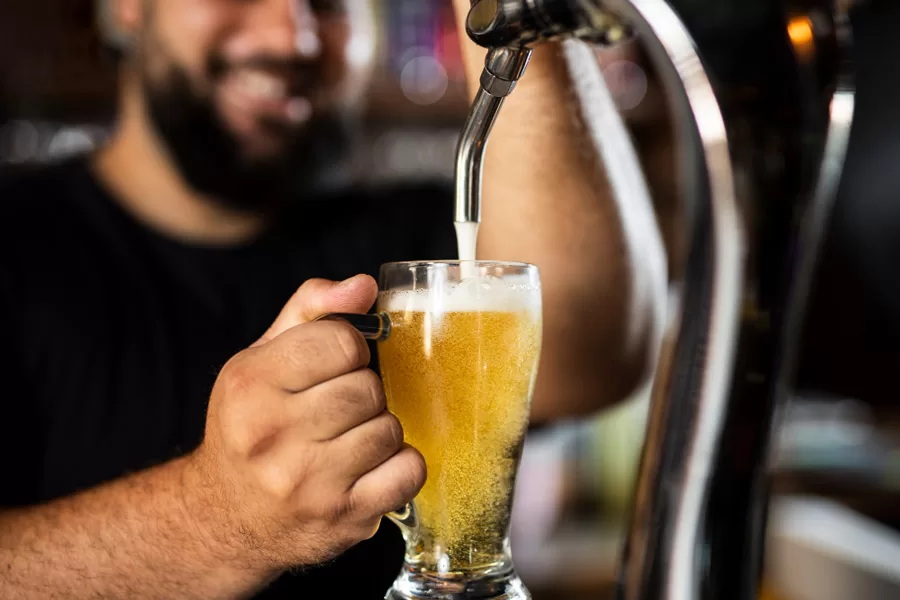Few things are as satisfying as a cold pint of draft beer. The crisp, fresh taste and smooth texture make it a favorite among beer enthusiasts. However, the quality of draft beer can vary greatly depending on the cleanliness of the beer lines. Dirty lines can result in flat, acidic, and unpleasant-tasting beer, and can even pose health risks to consumers.
In this article, we will explore the impact of dirty beer lines on draft beer quality and discuss the importance of regular maintenance and cleaning to ensure a pristine drinking experience.
The Problem with Dirty Beer Lines
Dirty beer lines can ruin even the best brews. When beer travels through dirty lines from the keg to the tap, it can become contaminated and lose its carbonation. This leads to a flat and less flavorful beer. Additionally, bacteria can start to grow inside the tubes, resulting in off-flavors and potential health hazards.
A study titled “Microbial Communities in Retail Draft Beers and the Biofilms They Produce” found that retail draft line contamination is widespread and that routine line cleaning methods are often insufficient to suppress beer spoilage.
Bacteria and yeast can colonize the tubing material, forming biofilm communities that spoil the beer’s flavor. The most common bacteria found in dirty beer lines are;
- Pediococcus and
- Lactobacillus
Other harmful bacteria such as;
- Obesumbacterium
- Pectinatus, and
- Zymomonas can also thrive
The Impact on Beer Flavor and Aroma
Spoiled beer due to dirty lines can result in a more acidic and vinegar-like taste. If you’ve ever thought that beer tastes off or like “piss,” dirty beer lines may be the culprit. The aroma can also be affected, as beer should have a pleasant fragrance that corresponds to its style. If the aroma is lacking or completely gone, it’s a sign that the beer lines may need cleaning.

Diacetyl, a chemical found in beer that contributes to its aroma, can accumulate in beer lines contaminated with bacteria such as Pediococcus and Lactobacillus. This can create a slick and slimy texture within the tubes, further compromising the quality of the beer.
Health Risks of Dirty Beer Lines
In addition to affecting the flavor and aroma of beer, dirty beer lines can also pose health risks to consumers says gastro doctors. Bacteria and contaminants in the lines can lead to gastrointestinal issues such as diarrhea, headaches, and nausea. While getting sick from bad beer is not common, it’s a preventable issue that can be avoided through regular line cleaning.
The Importance of Clean Glassware
While dirty beer lines are a concern, clean glassware is equally important in ensuring a quality drinking experience. Contaminated pint glasses can affect the taste and appearance of beer. A tip from bar owner Jeff Johnsen is to check for bubbles on the side of the glass. If there are bubbles, it indicates the presence of contaminants or yeast on the glass’s surface. Clean glassware helps preserve the integrity of the beer and enhances overall enjoyment.
The Challenges of Maintaining Clean Beer Lines
Maintaining clean beer lines is not an easy task for bar owners and operators. Many bars face limited storage space, an excessive number of taps, and poor bar design, making it challenging to keep the lines clean. Lengthy beer lines can hold beer for extended periods, leading to stagnant and compromised beer. Some lines even have a capacity of multiple pints, further exacerbating the issue.
Walt’s Bar: A Champion of Clean Beer Lines
Do you want to know who stands out as a champion of clean beer lines? Walt’s Bar in Eagle Rock, Los Angeles is the winner. The owners, Jeff and Julia Johnsen, understand the importance of an immaculate beer system. They clean their beer lines weekly, ensuring that every pint served is of the highest quality.

The bar’s direct-draw beer system, designed by Eric Huwig, allows the beer to flow directly from the keg to the tap through a three-foot tube. This setup minimizes the beer’s contact with the lines, preserving its carbonation and freshness. Unfortunately, only a few bars can operate with such efficiency due to space constraints and other limitations.
The Benefits of Clean Beer Lines
Bars like Walt’s that prioritize clean beer lines offer a superior drinking experience. Each pint drawn from the tap tastes crisp, fresh, and aromatic. Regular maintenance, system care, and attention to detail are what set these bars apart from others. By ensuring clean beer lines, they demonstrate a commitment to quality and customer satisfaction.
The Importance of Regular Line Cleaning
To maintain clean beer lines, regular cleaning is essential. Kegworks and the Brewers Association recommend cleaning beer lines at least every two weeks, while others advocate for weekly cleaning. The process involves disassembling, soaking, flushing, and cleaning the lines thoroughly before reassembling them. While it may be time-consuming and labor-intensive, it is necessary to preserve the integrity of the beer and prevent any health risks.
Conclusion
Dirty beer lines can have a significant impact on the flavor, aroma, and overall quality of draft beer. Regular maintenance and cleaning are crucial to ensure a pristine drinking experience and minimize health risks. Bars like Walt’s set an example by prioritizing clean beer lines, and offering their customers the best possible pints.
By understanding the importance of clean beer lines, consumers can make informed choices about where to enjoy their favorite draft beers. So, next time you’re craving a pint, remember to think twice about the cleanliness of the beer lines before raising your glass. Cheers to clean beer!
Related search:
